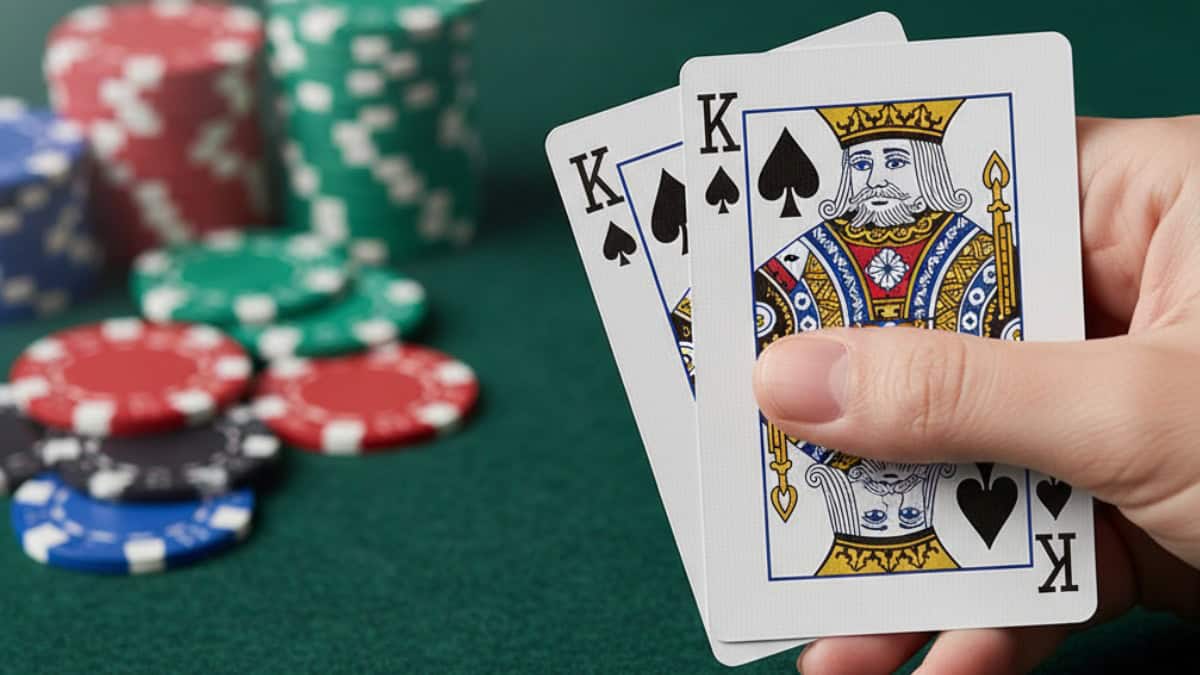
Understanding Poker Tells: Complete Guide for Beginners
Poker is played with imperfect information, so every clue matters. Poker tells are small behavioral or timing cues that, when read in context, can hint at hand strength and give you a small edge.
The Two Forms of Poker Tells
Betting patterns are your most reliable clues – you’re watching how someone sizes, times, and repeats their bets across similar spots. Read the betting patterns in context (position, stacks, table history) and you’ll get the clearest picture of range and intent.
Physical tells are the little things, like posture, chip handling, micro-expressions, so things that can hint at confidence or nerves. They’re player-specific and easy to fake, so treat them as supporting evidence rather than the main story.
In online poker, only betting patterns apply since you don’t see the body language.
A List of Common Poker Tells: What Do They Mean?
Here’s a quick, practical guide about common poker tells and what to learn from them.
Tells that may indicate strength:
- Snap call or smooth, unhurried actions
- Steady eye contact or relaxed posture after betting
- Smooth, controlled chip handling
- Glancing at opponents’ stacks as if planning a raise
- Sudden stillness or measured breathing before aggression
- Small, quiet, deliberate chip placement
- Subtle defensive movements (Upswing: protective/self-touching can signal confidence)
Tells that may indicate weakness:
- Noticeable hesitation before betting or calling
- Forced small talk or unnatural chatter to seem calm
- Tight, closed body language (crossed arms, shielding chips)
- Fidgeting: chip riffling, face-touching, avoiding eye contact
- Overly strong theatrics, like slamming chips, big sighs
- Quick defensive motions (Upswing: self-touching/“protective” behavior)
- Re-checking hole cards after the flop
Practice is the Key
Start simple by studying your opponents. To do so, focus on one or two players, ideally those acting right before and after you, since their decisions affect you most.
Watch how they bet and behave in different spots, and always pay attention to showdown; that’s where your notes turn into real reads. Use downtime (hands you’re not in) to build the habit: observe posture changes, energy shifts, hesitation, and how these line up with revealed hands.
Quick routine to follow:
- First 10 minutes: track just 1-2 players
- Every showdown: check your observations against the cards
- Gradually widen your focus as patterns repeat
Setting Up False Poker Tells
You can deliberately script your table image. When you’re strong, stay loose and relaxed; when you’re bluffing, keep the casual chatter going, and on boards that are scary for your opponent, fire a quick, confident bet even with air to project strength.
Use this sparingly – as a beginner, you should be cautious, because if you’re not confident, you’re more likely to leak real tells. Make sure to learn your natural baseline first, then experiment.
Don’t Overestimate the Importance of Tells
In the end, remember that betting patterns matter more than physical cues, especially at online casinos. Let sizing, timing, position, and decision flow lead your reads, and treat body language as a soft tiebreaker.
Group opponents by broad tendencies like tight-aggressive, loose-passive, etc., and recalibrate at showdowns. When you combine both sources in context, you can carve out a small, steady edge. In the long run, profits come from actions, not expressions.